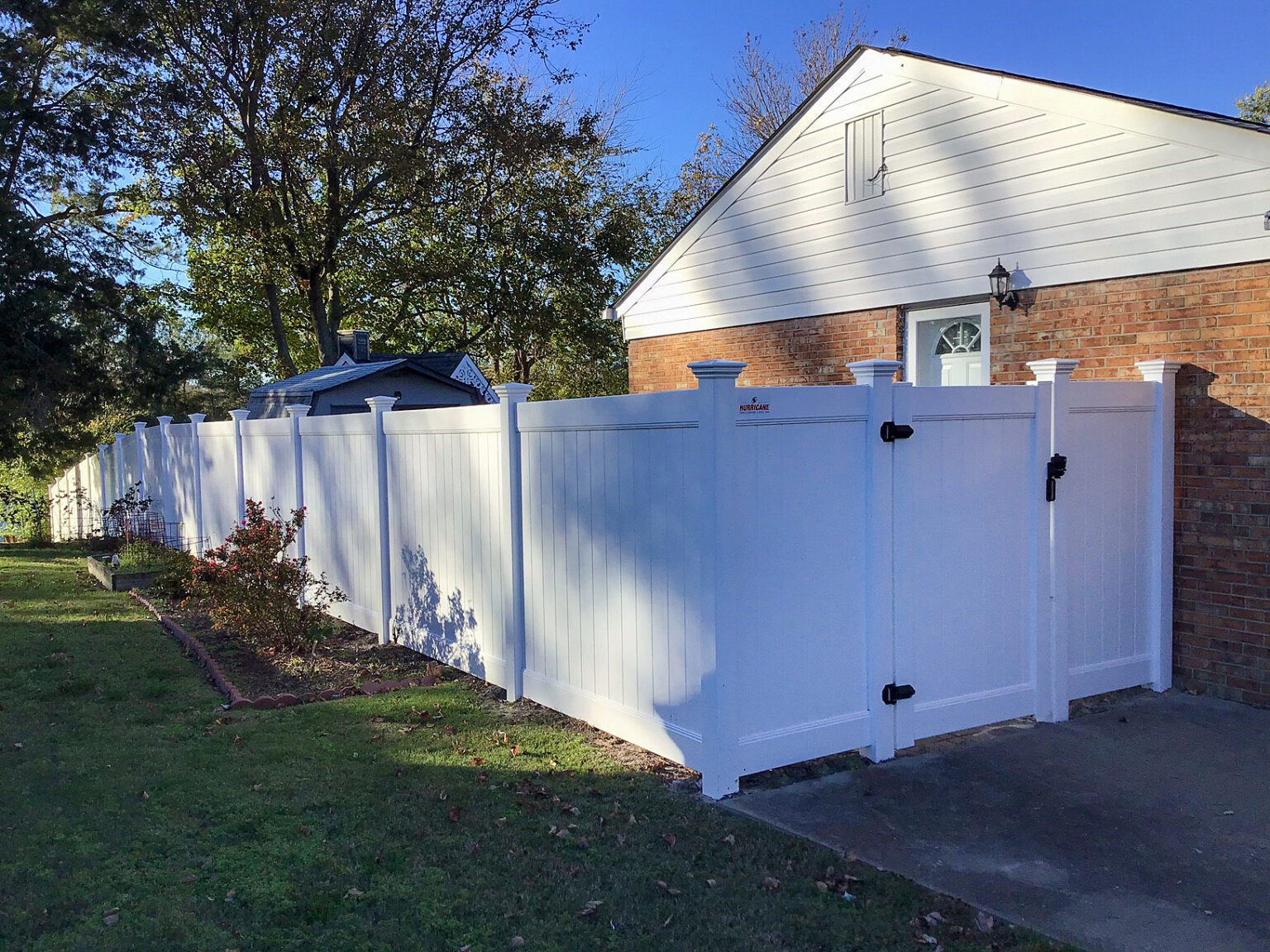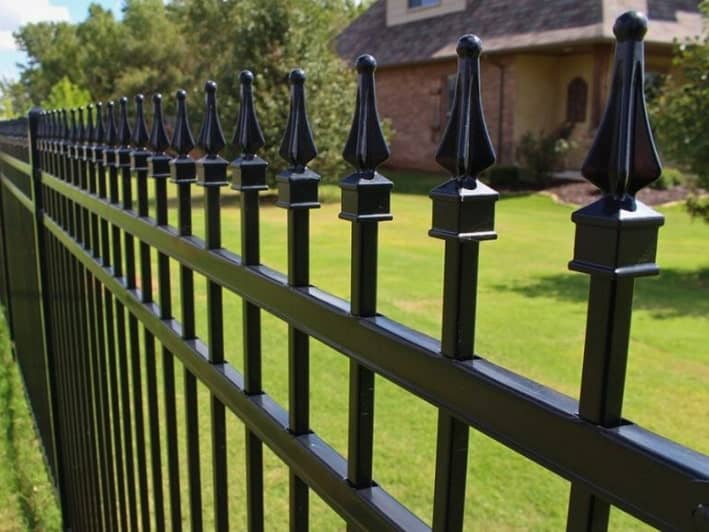Personalized Designs You Can Expect from an Creative Deck Builder
How to Recognize Usual Issues That Need Immediate Fence Repair Service
When it pertains to preserving your fence, it is essential to spot issues prior to they end up being bigger issues. Frequently looking for signs of decaying timber, leaning panels, or corrosion can save you time and money in the future. You may not understand how weather and insects can compromise your fence's honesty. Let's explore the common indications that suggest your fence needs prompt focus, so you can keep your residential or commercial property secure and looking its best.
Indicators of Rotting Wood in Wooden Fences
Have you seen your wooden fencing looking a little bit shabby? It might be time to check for signs of decomposing wood if so. Initially, examine the base of the blog posts and panels for soft spots. If you press on the wood and it feels squishy or crumbles, that's a clear indication of rot. Next, search for discoloration or dark places on the timber-- these frequently signal moisture damages. Focus on any kind of peeling paint or surface, as this can subject the timber to additional degeneration. In addition, a poignant, moldy odor can suggest fungal development. Don't neglect to check links and joints; if they hang or falling apart, the wood underneath is most likely jeopardized. By capturing these indications early, you can prevent extra considerable damage and keep your fencing standing solid. Routine maintenance is crucial to prolonging the life of your wood fencing.
Leaning or Tilting Fence Panels
It's critical to recognize what triggered it if you've noticed your fencing panels turning or leaning. This problem may indicate underlying structural damage that needs your interest. Allow's discover the typical reasons and the repair service options readily available to get your fencing back in shape.

Reasons For Leaning Panels
When you see your fence panels leaning or tilting, it's frequently an indication of underlying issues that need attending to. One common reason is insufficient drainage; excessive water can wear down the dirt around the fencing blog posts, weakening their assistance. An additional wrongdoer can be solid winds or tornados that push versus the panels, particularly if they're not appropriately secured. Additionally, the natural settling of soil gradually can trigger articles to change, bring about a tilt. Parasites, like termites, can endanger the stability of wooden panels, causing them to lean. Lastly, inadequate installation methods might result in panels not being firmly set, leaving them at risk to leaning under pressure. Address these problems immediately to maintain your fencing's stability.
Signs of Architectural Damage
Observing turning or leaning fence panels can be alarming, as these issues typically show structural damages that needs prompt attention. When your fence starts to lean, it might signal that the messages are shifting or that the dirt around them has actually eroded. Pay close attention to spaces in between panels or posts, as these can additionally recommend instability. deck builder. In addition, look for splits or splintering in the wood, which can compromise the overall framework. It can jeopardize the integrity of the fencing if you discover corrosion or rust on steel components. Remember, disregarding these indications can lead to much more extreme damages down the line, so it's important to evaluate the scenario promptly and do something about it prior to it worsens
Fixing Options Available

Corrosion and Deterioration in Metal Fences
If you have a metal fence, you may discover corrosion and corrosion creeping in over time, particularly if it's subjected to wetness. These issues not just impact the appearance of your fence yet can also endanger its structural integrity. To identify corrosion, search for reddish-brown places or spots, which suggest the metal is oxidizing. Deterioration can spread out promptly if left untreated, damaging the fence and leading to costly repairs.To take on rust and deterioration, you need to cleanse the affected areas with a cable brush and use a rust-inhibiting primer. When the primer dries out, take into consideration repainting the fence with a weather-resistant paint to shield it further. Normal upkeep, such as inspecting for indications of rust and retouching paint as required, will certainly help expand your fence's life expectancy. Attending to these concerns quickly guarantees your metal fencing continues to be strong and visually appealing for several years to find.
Splits and Splits in Plastic Secure Fencing

Root Causes Of Vinyl Damages
Vinyl secure fencing is popular for its sturdiness, yet it can still struggle with fractures and divides because of various factors. One significant reason is severe temperature variations. It can damage the product over time when vinyl increases in the heat and agreements in the chilly. In addition, direct exposure to extreme sunlight can cause UV destruction, making the vinyl brittle. Physical impacts, like unintentional accidents or hefty branches, can likewise develop fractures. Poor installment or making use of low-quality materials can aggravate these problems. Age plays a role; older vinyl fence here are the findings is extra at risk to damages. Normal inspections can help you recognize these aspects prior to they lead to significant troubles. Take positive steps to assure your fencing continues to be intact and solid.
Fixing Cracks Efficiently
Although splits and splits in your vinyl secure fencing can be concerning, addressing them without delay can prevent additional damages and preserve the fencing's look. Analyze the size of the split. For tiny splits, a plastic repair package frequently consists of adhesive that can bond the sides, giving a smooth fix. Tidy the area extensively before using the sticky, guaranteeing it adheres properly. For larger splits, you might require to make use of a plastic patch. Cut the spot to size, apply adhesive around the sides, and press it strongly onto the split. Permit it to heal based on the supplier's instructions. Routine maintenance and fast repair work can prolong your fence's lifespan, maintaining it looking wonderful for years ahead.
Loose or Missing Out On Fence Messages
Missing or loose fence articles can threaten the stability of your whole fencing framework. It's important to attend to the issue immediately if you discover any blog posts leaning or wobbling. Inspect for any kind of indicators of movement, as this can lead to further damage gradually. You can easily examine the issue by providing each message a gentle shake-- if it feels unpredictable, it's time to take action.For missing articles, you'll require to change them immediately to maintain your fencing's honesty. When you set up new messages, see to it they're safely secured their explanation in the ground with concrete or crushed rock for added security. If a message hangs, tighten it by including additional support or driving it deeper into the ground.Ignoring these concerns can lead to larger issues, like spaces in your fencing and even full collapse. So, watch on your blog posts and remain positive about repairs!
Damage From Weather and Natural Elements
Climate and natural environments can damage your fence, bring about numerous forms of damages that call for prompt focus. Hefty rain can trigger timber to rot, making it weak and unsteady. Snow build-up may bend or damage panels, while solid winds can root out fencing blog posts or cause areas to lean.If you see cracks or splintering in wooden fencings, it suggests drying as a result of intense sun exposure. Metal fences can corrosion if safety coverings use off, specifically in moist or seaside areas.Inspect your fencing frequently after tornados or severe weather to capture any type of damage early. Resolving these issues swiftly can save you from pricey repair services down the line. Don't wait till a small issue transforms right into a significant one; stay positive and maintain your surround top form to keep both functionality and aesthetic charm.
Pest Infestation and Termite Damage
When you notice signs of pest invasion or termite damage, it's necessary to act promptly to avoid additional damage. Search for mud tubes along your fencing or hollow-sounding timber, as these suggest termites are at work. You may also look at this web-site see tiny openings or frass, which is termite droppings appearing like sawdust. If you find any one of these signs, it's time to examine the damage.Don' t wait up until it's also late; bugs can compromise your fencing's stability. Evaluate the surrounding area for beetles or ants, as they might be adding to the trouble. If you suspect a problem, consider getting in touch with a pest control professional to deal with the issue.repairing and validate or replacing damaged sections of your fence immediately not only restores its toughness yet also protects against bugs from spreading out additionally. Remain alert to keep your property pest-free and secure.
Regularly Asked Concerns
Just how Typically Should I Inspect My Fencing for Damages?
You ought to inspect your fence at least twice a year, ideally during spring and fall. Routine checks assist you detect damages early, conserving you time and cash on fixings while keeping your home's look and safety.
Can I Repair a Fence Myself or Employ an Expert?
You can most definitely fix a fence on your own if you have the right tools and skills. However, working with a specialist assurances high quality work and saves you time, particularly for complex repair work or extensive damages.
What Equipment Are Required for Standard Fence Repairs?
For fundamental fencing repairs, you'll need tools like a hammer, screwdriver, pliers, a saw, a level, and gauging tape. deck builder. Depending on the repair service, you could also need nails, screws, or replacement boards
Just How Much Does Fencing Fixing Generally Price?
Fencing repair expenses vary commonly, yet you can expect to pay between $200 and $1,500 depending upon materials, labor, and degree of damages. It's wise to get several quotes for the ideal offer.
When Is the very best Time of Year for Fencing Fixes?
The most effective time for fence repair work is throughout light weather, usually in spring or early loss. You'll prevent severe temperature levels, making it less complicated to function and making sure the materials set correctly for lasting resilience (deck builder). Observing leaning or tilting fence panels can be worrying, as these issues commonly show structural damage that requires instant interest. Loosened or missing fencing messages can threaten the security of your whole fencing framework. Snow build-up could bend or damage panels, while solid winds can uproot fencing posts or trigger sections to lean.If you discover cracks or splintering in wooden fences, it's a sign of drying out due to intense sunlight exposure. Steel fencings can corrosion if safety finishes wear off, especially in damp or seaside areas.Inspect your fencing consistently after storms or severe weather condition to catch any damages early. Fencing repair work expenses vary widely, but you can expect to pay between $200 and $1,500 depending on materials, labor, and extent of damages